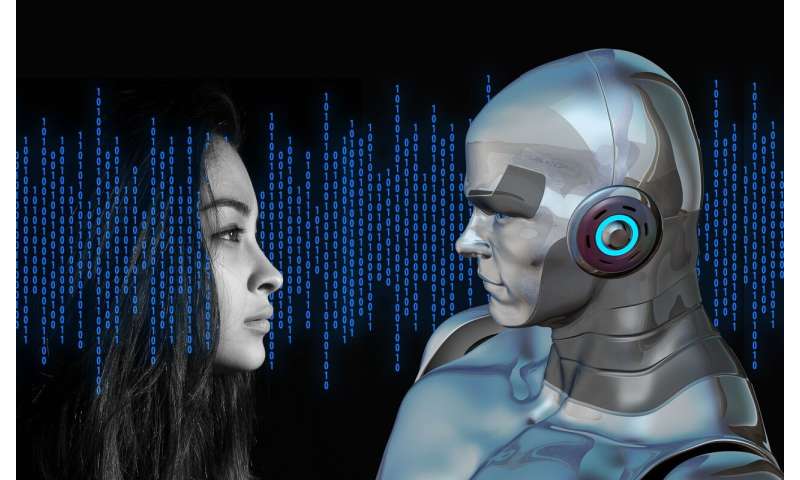How Will 5G Networks Get Faster? Densification

The most basic form of densification involves increasing the number of cell
towers. Problem is, that’s not really easy, particularly because network
carriers are running into challenges with getting approval from local
governments and landowners for adding new transmission points. The situation
has become so challenging, in fact, that the US FCC recently had to issue a
ruling clarifying the rules for 5G network infrastructure deployment. The new
ruling essentially limits how much local governments can slow upgrades to
existing network infrastructure, such as cell towers. Additionally, most of
the early concepts for 5G densification depended on building and installing a
lot of small cells—essentially shipping box- or even shoebox-size devices that
could be used to enhance the network. The problem is, most of the small cell
efforts were targeted towards mmWave, and it’s clear now that those efforts
(and the technology overall) are going to take much longer to widely deploy
than initially expected. Not only is it difficult to get small cells
installed, the costs for the equipment remain high—and the ROI isn’t as clear
for many network providers as they first thought.
Silos, Politics and Delivering Software Products
Misalignments between teams can focus on priorities, scope or direction.
Imagine that a team finds itself blocked as it is unable to finish a piece of
work until work is completed by another team. The other team might not
consider this a high priority item for them, in which case there is a
misalignment of priorities. Or the other team might consider the work outside
of their scope, in which case it needs to be resolved who should deliver the
work. Or more seriously it could be a disagreement about direction - the other
team might understand the request but consider it a bad request that they do
not want to see fulfilled ... A common practice is to dedicate teams to
particular features with an intended system. Each team has members with
different specialisations and is intended to be able to build a ‘vertical
slice’ of functionality that could be delivered to users. For example, the
team wouldn’t contain only frontend developers so that they would have to wait
for backend developers from another team in order to progress. Teams that
provide outputs for other software teams rather than for users are called
component teams rather than feature teams.
Office life will never be the same again. Here's what comes next

Research suggests that, prior to the coronavirus outbreak, only about 5% of
the UK's 33 million workers worked mainly from home. Despite the regulations,
it is relatively easy for employers to refuse a request for home working on
one of the prescribed grounds outlined in the legislation, and employees have
little opportunity for recourse. As such, presenteeism ruled: workers needed
to be seen in the office to ensure they were working. Now, of course,
everything has changed. As Wincanton CIO Richard Gifford recognises, the
lockdown-enforced shift to remote working is a total reversal of the usual
approach in most big companies until now. "Our HR policy was written in a way
that previously, if you wanted to work at home, you could, but you'd have to
come in and give some good reasons and a decision would be made. Now we're
saying, 'you will work at home and you need to give me some good reasons why
you need to be in the office'. So, it's a complete turnaround," he says.
Gifford has had to maintain a limited on-site presence to manage his firm's
on-premise data centre during the outbreak. Yet the vast majority of the
firm's 4,500 office-based are working at home – and the result, aided by a
solid VPN and a bunch of cloud applications, is likely to be a long-term shift
in the perception of remote working.
Three Painful Lessons You Can Avoid with Your APIs and Mobile Apps
If something goes wrong with a website or even an API, you can publish an
updated version without the end user even being aware of it. Not so with
mobile. If you release a new version, Apple and Google could take hours or
days to approve and publish it. Even if you get it fast-tracked, and it is in
the App Store hours later, you have no guarantee that the end-user will
install the updated version with the fix. Which is why it is absolutely
critical to have an API and mobile strategy and follow best practices when
designing, developing, and publishing your mobile apps and APIs. ... When
projects start going over-budget or over-time, proper testing is often one of
the first things that gets cut or reduced. Your APIs and Mobile Apps need. You
need a plan for this as well because having a few people randomly using the
app IS NOT TESTING! As an enterprise business, you absolutely must have
thorough test plans. This needs to be created by an experienced, senior QA
Architect. If you are outsourcing your testing, get involved to see who is
creating the plan and have a 2nd (or 3rd) set of eyes on the draft and final
plans to be sure it is a solid and thorough plan.
Goodbye Xamarin.Forms, Hello MAUI!

MAUI is essentially the next evolution of Xamarin.Forms. It is a framework
that will allow us to create native user interfaces for desktop and mobile
devices, and the most surprising thing about this is that it has a single code
base and a single project. In other words, no more different heads for each
mobile OS (iOS and Android)! Alongside MVVM, MAUI will also support The Elm
Architecture popularly known as the MVU (Model View Update) design pattern.
MVU encourages a code-first development experience that rapidly updates the
UI. Microsoft understands the power of the MVU pattern and has introduced a
new unified way to build cross-platform native front ends from a single code
base. ... With the arrival of MAUI, we will have a single project. We can also
choose deployment between different devices or emulators even if we have a
single project. But what about application resources like images? The tooling
will manage shared sources on each platform as well as the management and
creation of images adapted to each platform. ... MAUI is a renewed
Xamarin.Forms with similar characteristics but greater features. The structure
of Xamarin.Native (Xamarin.iOS and Xamarin.Android) will not change, only the
name in .NET 6 will.
Building the Future with 5G and Wi-Fi 6

Based on the Deloitte survey results among executive decision-makers, network
metrics don’t seem to be driving the shift as a majority of decision-makers
are “satisfied” or “extremely satisfied” with a range of traditional
performance characteristics of their current wireless networks, including
reliability and resilience, data speed, latency, coverage, location accuracy,
energy efficiency, and device density. What is driving the expected shift is
that there are signs that organizations are looking beyond traditional network
metrics such as reliability and coverage and are instead adopting advanced
wireless technologies to hopefully unlock competitive advantage and create new
avenues for innovation in their operations and offerings. What the survey
stated is that the current technology is often considered to prevent them from
addressing the innovative use cases they would like to target. This strong
belief in the transformative power of advanced wireless connectivity is
especially impressive, considering that both 5G and Wi-Fi 6 are the latest
generations of technologies that originated more than 20 years ago and have
been evolving ever since.
Study illustrates huge potential of human, artificial intelligence collaboration in medicine

In an experiment created by the study authors, 302 examiners and/or doctors
had to assess dermoscopic images of benign and malignant skin changes, both
with and without the support of Artificial Intelligence. The AI assessment was
provided in three different variants. In the first case, AI showed the
examiner the probabilities of all possible diagnoses, in the second case the
probability of a malignant change and, in the third case, a selection of
similar images with known diagnoses, similar to a Google image search. As a
main finding the authors observed that only in the first case did
collaboration with AI improve the examiners' diagnostic accuracy, although
this was significant, with a 13% increase in correct diagnoses.
"Interestingly, less experienced examiners benefit more from AI support than
experienced ones. Less experienced examiners trusted AI more than did the
experienced ones. The latter only accepted the AI suggestions to change their
original diagnosis in cases where they themselves were unsure," the authors
wrote. A second experiment showed that all examiners, even acknowledged
experts, can be misled by AI, if the output was changed to indicate false
diagnoses.
How to Build an API Testing Program with MuleSoft Anypoint

MuleSoft's Anypoint Platform includes a native testing framework (MUnit) that
allows Mulesoft experts to conduct unit and API tests on Mule apps. You can
also mock APIs to run tests (shift left) before going live. However,
MUnit specifically tests Mule flows. The reality is that today's average
business transaction involves 35 or more API connections. While MUnit frees
developers and engineers to productize APIs easily in Anypoint Studio, MUnit
does not extend testing coverage to the APIs that are outside of your Anypoint
platform. If solely depending on MUnit for global API quality, your team will
not have the clarity to uphold internal and external SLAs for API uptime and
performance. The ultimate goal of modern API testing is to ensure that
functional, integration, performance, and data-driven tests capture the entire
API consumer flow. This is primarily to catch the most common root cause of
API problems: human error. ... With human error behind most of your current
and future API quality headaches, you must ask whether siloed testing efforts,
even if they are bridged by sending test result data to a platform like
Elastic, can connect the dots to detect human error.
Effective Governance of Data Requires Understanding of Risk Relevance

Effective governance of data and information risk management require
discipline in specification: identifying and organizing the different types of
data vulnerabilities, determining the threats that can exploit those
weaknesses, understanding the scope of the consequences, and assessing the
probability that a threat will take place and--if it does--assessing the
probability that there will be consequences. You might think that the best
approach would be enumerating the different vulnerabilities and then working
from there to consider how those vulnerabilities can be exploited. And, in
fact, there are some published guidelines and practices that suggest surveying
your organization to assess, describe, and categorize risks as a prelude to
developing controls and monitoring for information risk events. Yet, that
approach may not be the most practical to take if your information risk
management framework is to be aligned with resource allocation and
preventative controls. One immediate challenge is that the domain of potential
risks is expansive, and one can survey an entire enterprise of data assets and
consider the risks before any substantive vulnerabilities are revealed.
Culture of Innovation: Data Management on the IoT Edge
There are a whole host of challenges that building these more complicated
architectures create. I think it's definitely one of the top challenges we
face. It depends on how distributed this architecture is, for any given
application. But if you're ever depending on these edge devices, which may
have keys that allow them to access your corporate corporate network, because
they have to be able to send data back to your centralized system, you know
security is a huge risk there. These are devices that are out in the field and
have less physical security. A use case for one of our customers is that
they have computers running our software on every train locomotive in North
America. At every switch, and every train crossing are these shacks, at the
side of the railroad tracks, hundreds of miles from civilization. Maintenance
is an issue and security is an issue because potentially someone could walk up
and tamper with these systems. So you need to make sure that the platform is
secure from, you know, from the CPU off to avoid any sort of potential
security risk.
Quote for the day:
No comments:
Post a Comment